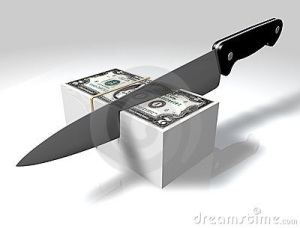 Recently, during a dinner with some senior MNC friends, a discussion led to the question of comparing a cost effective model with a growth model. Normally, I do not write about these management questions. Most people do not have any interest in them, whatsoever, and I myself find them very boring. However, in this case, I thought it incumbent to record my learnings, as it may help someone in the future.
Recently, during a dinner with some senior MNC friends, a discussion led to the question of comparing a cost effective model with a growth model. Normally, I do not write about these management questions. Most people do not have any interest in them, whatsoever, and I myself find them very boring. However, in this case, I thought it incumbent to record my learnings, as it may help someone in the future.
Right at the outset, let me declare that I find it amazing that some big management gurus tilt towards cost effectiveness, while in my opinion, cost cutting is only an occasional tool to boost efficiencies (for minimal periods) and can never create sustainability, as compared to a business growth model, which leads to longer term sustenance.
The answer in sums is so simple. Fixed cost will be, say 10% of the total revenues of the company. A substantial saving in these will lead to an overall increase in bottom line by approximately 1% of revenue. A similar growth rate in the overall business revenue, will lead to a 10 % growth in the topline. This will lead to a very significant pass through to the bottom line. That is the essential difference. In one case you are expanding the whole pie, while in the other its just one small slice being improved, while the pie does not expand, infact sometimes contracts.
Nowadays it seems to be a habit though. Most MNCs seem to be restructuring all the time. This is really a code word to control costs and become more efficient. A continuous cost drive takes the edge off creativity and makes people risk averse. Employees are incessantly worried about their jobs, so very little space is left to actually worry about performance. There are other side issues. Uncertainty, while cost is saved, leads to tension and insecurity. This inevitably leads to politics and a lot of in-fighting. The employees forget the purpose of working for the betterment of the company. Very soon, even when the cost has been saved, the company has lost enough sales, so that we are back to square one. The same bottomline! So then this process is applied again and more costs are drawn out of the system, with the same circular reference effect on the sales. The company is actually chasing its tail and we have seen some large companies dwindle into nothing over time.
Gunning for growth is always a positive message. It means more sales, more people working, less per capita costs, greater buoyancy, more people progressing in their careers and general all round happiness. Of course it comes with more risks, as growth is not a given and many times one has to create this growth, sometimes with innovation and change, other times with out of the box thinking.
Fortunately, in almost all my career, I have been in growth situations and only a couple of times has one encountered a cost saving situation. I make no bones about it…once the job was done, my dislike for the organisation led me to leave it at the first available opportunity, as part of a general exodus of many good people. Infact, generally the best performing people find optimistic spaces and are much happier moving from these sort of adverse cost saving situations.
The need to cut costs will surface at times, especially when a business is in trouble, and to save the company and a larger part of the work force, some sacrifices have to be made. In this case cutting cost makes sense for survival sake. But not the way its practised today, for the sake of enhancing bottomline and rewarding shareholders at the cost of employees lives and families. That is a most inhuman form of management. At the same time one is not advocating rampant cost increases here. Its good to be cost conscious and not throw away efficiency. However, that is a mind-set and not the main purpose of the business, which is to sell profitably, make bottom-line, have an engaged work force and happy shareholders. A balanced path!
The picture is from the free picture site dreamstime.com
No comments:
Post a Comment